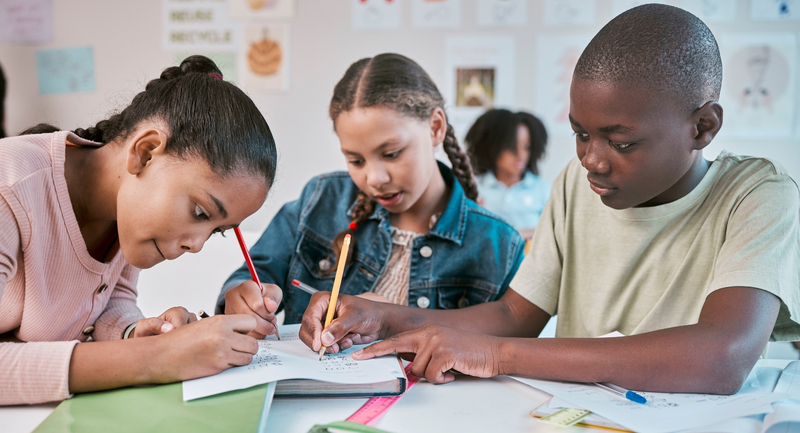On campuses across the country and across our communities, hate-filled speech has been on the rise as students emulate divisive language in national rhetoric and policy. A recent national study from UCLA found that across the U.S., “teachers are seeing increased incivility, intolerance and polarization in classrooms,” “heightened polarization on campus,” and “an increase in students making derogatory remarks about other groups during class discussions.” Notably, “91.6 percent of teachers surveyed agreed that ‘National, state, and local leaders should encourage and model civil exchange and greater understanding across lines of difference.’”
The study speaks to a situation facing educators across the nation. Explicitly racist, Islamophobic, xenophobic, homophobic, anti-Semitic, sexist, and just cruel talk has become far more commonplace in our schools. And when students repeat these sentiments on our campuses, it’s educators’ job to respond.
But as hateful speech spikes on campuses, too many educators feel unsure of what to do.
Lawyers will debate the details in each case, but educators can hang on to some basic principles as they negotiate issues around speech in schools:
- Educators should never passively tolerate hateful speech on campus. Instead, we forbid threat speech and harassment.
- We challenge all speech that denigrates, disrespects or misrepresents “types of people.”
- At the very same time, we treasure free speech, not as some “right” to disparage others without any consequences but as the ability to discuss ideas.
Each of these ways of handling speech is core to an educator’s job.
We forbid threat speech and harassment.
Under the law, threats of violence are off limits in schools and elsewhere. A speaker can’t threaten others with violence in a school rally, in a comment in the hallway or classroom, or in a scrawl on the playground. There is “no constitutional right to be a bully.” Educators can’t allow “statements where the speaker means to communicate a serious expression of an intent to commit an act of unlawful violence to a particular individual or group of individuals.”
Harassment is also forbidden in schools. Our civil rights laws require educators to protect public school students from harassment or other discrimination based on race, color, national origin, sex, religion or disability (and in California, also gender identity, gender expression, and sexual orientation), because a school must maintain a safe and nondiscriminatory learning environment for all students. A speaker simply can’t repeatedly lob racist, Islamophobic, homophobic, xenophobic, or sexist slurs at people in school, because that endangers others’ well-being and obstructs their right to learn.
It’s educators’ job to prohibit “harassment by name calling” – to prohibit “conduct based upon protected status [see group list above] that is severe or pervasive” and so “unreasonably disrupts an individual’s educational or work environment or that creates a hostile educational or work environment.” By federal law and regulation, when hostile environments on campuses impede student learning, educators must take action to end the harassment, eliminate any hostile environment and its effects, and prevent the harassment from recurring.
This is why when a student writes a racist note to a peer and laughs, it’s not “just a joke.” Such language can threaten the peer’s very right to concentrate and access educational opportunity. Educators need to respond to even a single epithet or slur by making absolutely clear to students that we don’t harass people in school. And to prevent hateful speech and harassment in the first place, educators need to state publicly, proactively, confidently, collectively, and often that hate, harassment and intimidation have no place in our schools. On our campuses, we must emphasize, we will respect and value others so all can learn.
Clear and publicly available school policies against harassment can help foster learning environments where people aren’t denigrated and threatened so that students can participate in and benefit from school. So can proactive activities where students are asked to respect, value, and learn from one another; to learn facts about communities and our shared society; and to promote messages of inclusion themselves.
In responding to hate incidents, educators can combine formal punishment of harassers (which crucially signals to a community that unlawful harassment is completely off limits) with restorative dialogues that get students considering the consequences and causes of their speech. While educators (particularly K–12 ones) can restrict hateful student speech (like lunchroom chants) for causing “material and substantial disruption” of the school environment, in or out of the classroom, the most powerful response is to talk more explicitly with students about how words can hurt and about the harmful ideas under the words. As a civil rights lawyer put it to me, educators need to “have assemblies and discussion groups where you talk about why hateful speech is hurtful to other students.” That is, the most powerful work is preventative: “convincing the student that they don’t want to say it and it’s not right to say it, so they learn that it’s not the right thing to do.” A new initiative I’m codesigning with educators, #USvsHate, offers many such activities supporting students to know and respect their peers–and crucially, to rethink the old, false ideas under hateful speech that frame some people as more valuable than others.
What educators can’t do (due to law and regulation) is passively ignore hateful speech that “creates an intimidating, threatening or abusive educational environment.” As one San Diego student put it most simply in a panel on hateful speech, “if you hear a comment that could be harmful, talk it through rather than just dismiss it.”
We Challenge All Speech That Denigrates, Disrespects, or Misrepresents “Types of People”
Educators these days are even hearing students praise white supremacy and deny the Holocaust in class. What does an educator do? Respond. Educators should never let speech devaluing, disrespecting, or misrepresenting “types of people” occur in schools without response. Instead, we should always model what it looks like to challenge, engage, and question speech.
First, we explicitly challenge all speech denigrating “types of people” and press openly for kindness, learning and respect. (“We don’t want to say that here, because such language is harmful to others”; “our school community is about respecting all.”). (See Teaching Tolerance’s Speak Up at School for some more sentence starters.) Even a derogatory remark said with a laugh requires a response: “Those words hurt people”; “your comment has the effect of X.” Our job as educators is to shape student behavior; that means explicitly promoting respectful communication. And again, the primary antidote to a hostile environment in schools is preventative speech: continually talking in classrooms and campus-wide about how to respect and value other human beings every day.
Crucially, it’s also an educator’s job to question claims that hurt because they are inaccurate, and to press instead for the engagement of facts. In schools, lots of everyday talk harms because it repeats inaccurate claims about “types of people,” distorting other people’s families, cultures, histories, and neighborhoods or falsely deeming some “groups” less valuable, skilled, or deserving of opportunity. Educators should always remember that it’s our role to question claims that are inaccurate or under-informed and to invite evidence-based reasoning, ongoing learning about complex social issues, and a deeper understanding of history and contemporary lives. (See Schooltalk for hundreds of concrete suggestions and http://usvshate.org/our-lessons/ for classroom activities.) Educators can make clear that we don’t censor student perspectives that we disagree with politically or personally. We challenge speech that is harmful to others, inaccurate, or false. As a lawyer friend put it to me, “Free speech gives you the right to speak your view, but not to avoid criticism for it.” Indeed, “free speech” means the U.S. Constitution crucially protects the ability to challenge each other’s language and claims in schools.
We Treasure Free Speech – Meaning, the Ability to Discuss and Debate Ideas
The ability to debate ideas and claims is a central educational value: If I just censor others’ ideas, after all, they might later censor mine. It’s why we don’t preemptively outlaw all potentially “offensive” ideas or political speech from our students. It’s also why we don’t simply ban offensive ideas or political speech from our streets. We instead discuss speech’s content and consequences. We assess speech for its factual basis. We explicitly model ethical and accurate speech.
And to keep schools safe for discussing ideas, we don’t allow harassment or threats in our schools. Educators draw the line at these forms of speech so we can debate ideas.
In sum: To protect all students’ right to safely learn, discuss, and debate, teachers and administrators can hang on to all three pieces of advice at one time. We absolutely treasure the freedom to debate ideas and perspectives in schools. That’s precisely why we forbid talk that threatens harm or harasses and so obstructs the opportunity to learn. And to insist on schools kept safe for learning—and on educational standards where claims’ accuracy is bolstered by evidence—we challenge and question all speech that devalues or distorts fellow human beings.
Passivity and silence in response to hateful speech are never the answer. Engagement with words is. If left undiscussed, an inaccurate claim can metastasize into hate. If left unchallenged, hateful speech can escalate into threat. We have seen nationally how leaders and influencers who fail to send clear signals to speakers voicing intimidation, distortion and hate embolden next speakers to threaten other people with physical violence as well as words.
This is exactly the situation that teachers and administrators cannot allow in schools. To protect schools as places for the discussion of ideas, educators forbid the threat speech and harassment that endanger learning and lives. And we challenge and question all speech that hates and harms.
It’s our job.








